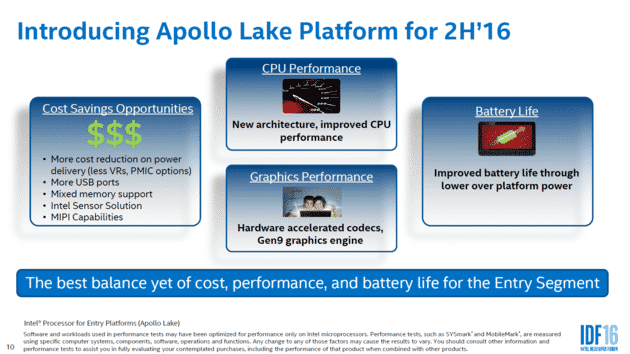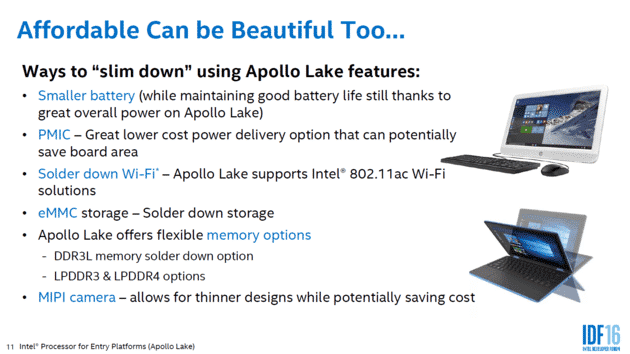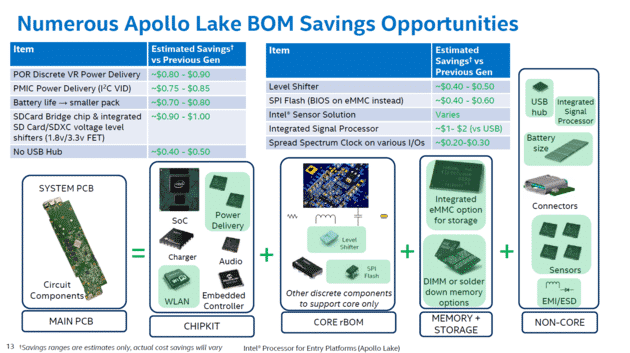The Apollo Lake list of processors are going to feature chips running in either a dual-core or quad-core package and will feature an extremely power efficient consumption value of 6W, and peak wattage up to 10W. These processors will be available in a BGA (ball grid array), meaning that they will come permanently incorporated onto their packaged motherboards. While details regarding base clock speeds have not been stated, the Goldmont architecture will have a boost clock speed that will go up to 2.7GHz. Their efficiency will also mean that manufacturers can afford to slim down the thickness of their products massively and while the manufacturing process as remained at 14nm, the improvement of the architecture will result in higher performance and efficiency compared to their predecessors. USB-C might also be a part of the configuration, and this interface has a ton of advantages compared to interfaces like USB 3.0. For starters, USB-C will be able to transfer up to 10Gbps, which is twice the data bandwidth of USB 3.0. Additionally, USB-C will also be able to transfer up to 100 watts of power. According to Intel, the Apollo Lake chips are expected to be present in products during the second quarter of 2016. Computerbase



